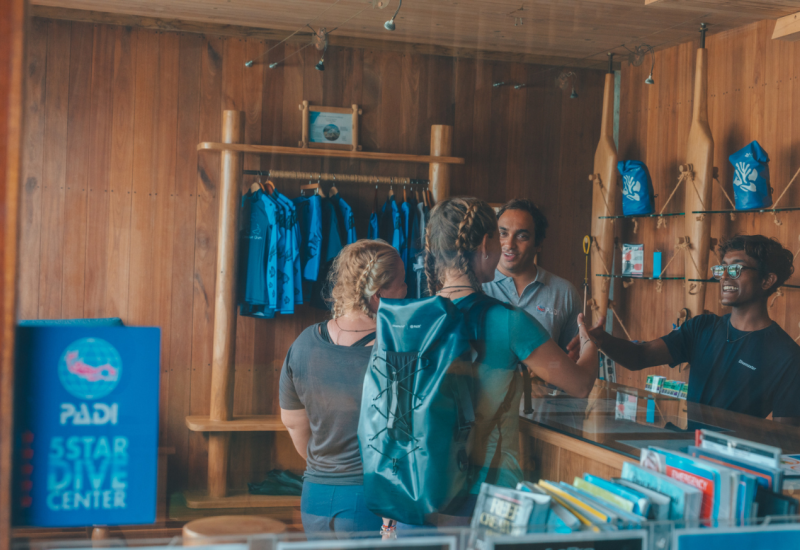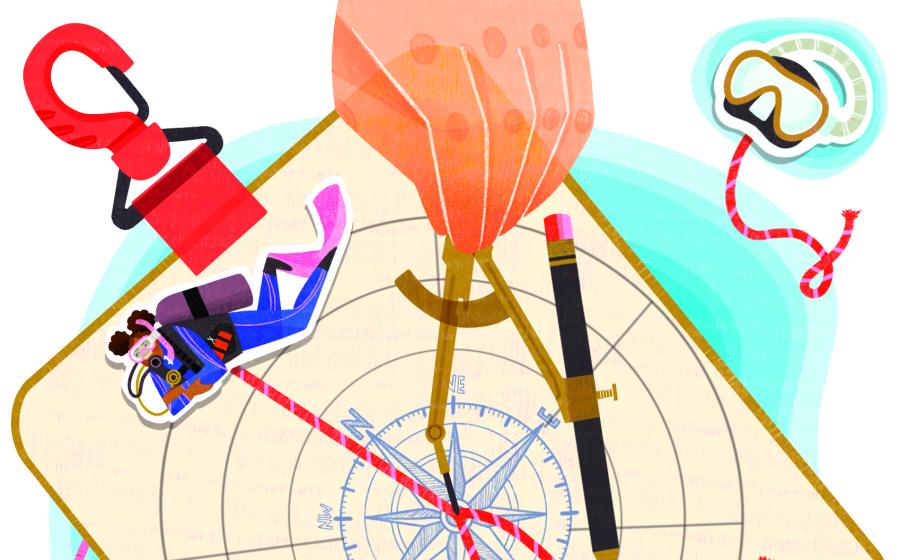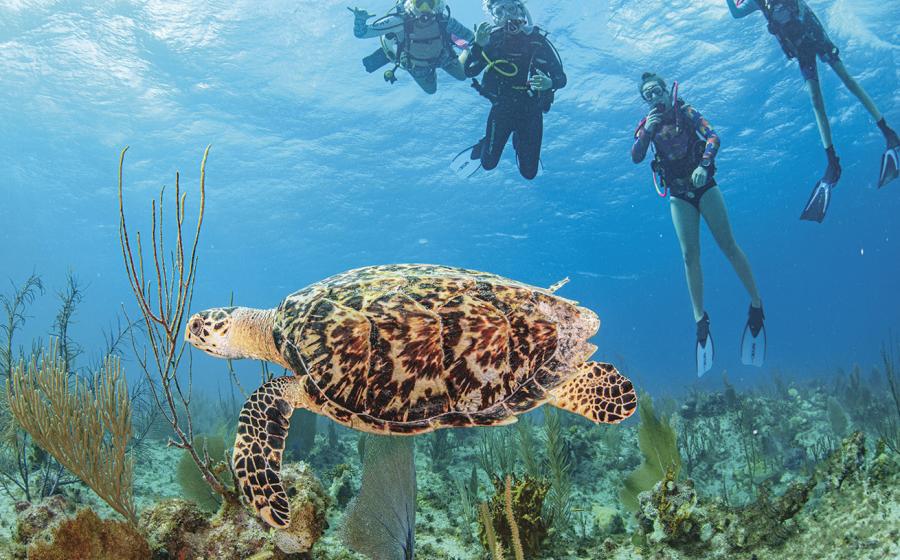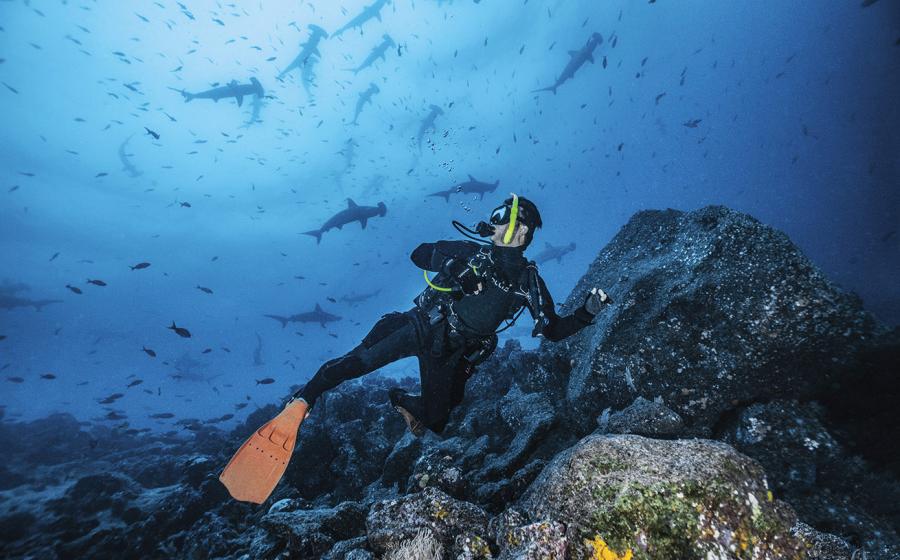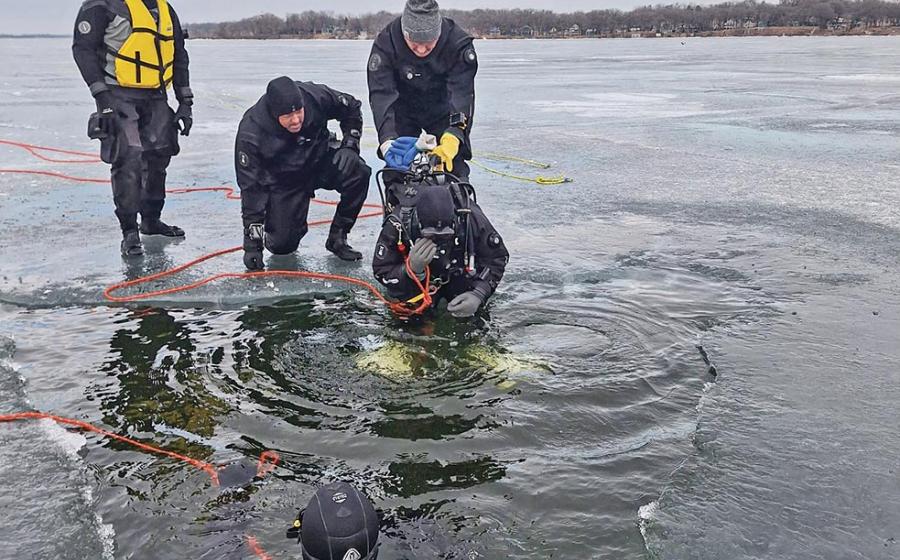Killer Whale Encounter in Sri Lanka

Courtesy Nicolas LecomteLittle is known about the migrations of orcas, but here we were — having a chance encounter with seven killer whales in the warm waters of the Indian Ocean.
The last thing I expected the week I was aboard the Sri Lanka Aggressor was to be in the water with a fast-moving, hunting pod of seven killer whales. But there I was — perched on the edge of one of the Aggressor’s Zodiacs, ready to slide into the water, in hopes they’d hang around long enough to get some video.
Alas and alack, the poor viz made shooting video impossible, but some dive buddies got a few photos of these lovely toothed whales (Orcinus orca belong to the oceanic dolphin family). If you're looking for tips on how to photograph them, here's one: It's very, very hard to keep up with killer whales.
The migration patterns of killer whales are poorly understood. We tend to think of them as a cold-water species, but they have been sighted in the Mediterranean, the Arabian Sea, the Gulf of Mexico and the Indian Ocean around the Seychelles. Even so, they weren't on our list of marine mammals we expected during our whale itinerary. But as this trip proved, killer whales roam the world's oceans, from the Arctic and Antarctic regions to tropical seas, pretty much as they damn well please.
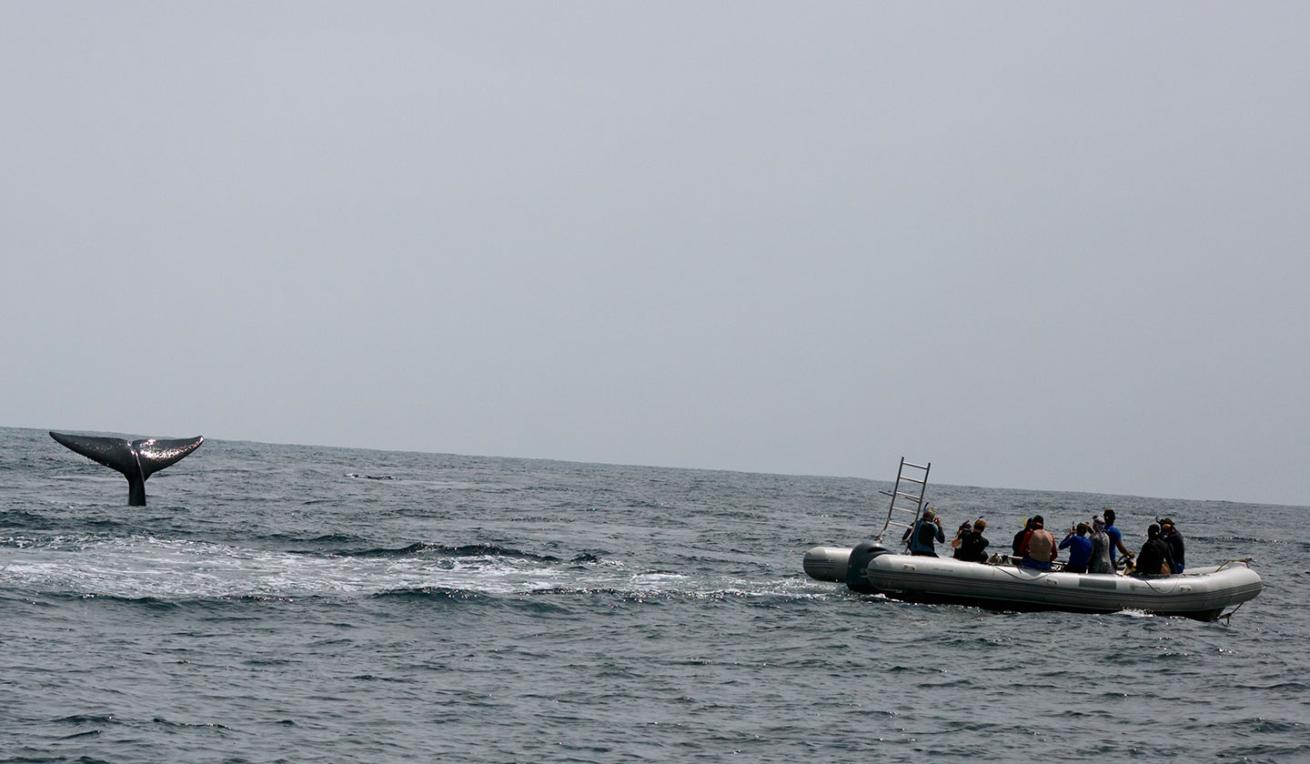
Courtesy Bruce LeibowitzA blue whale begins its dive.
The picture above sums up what it's like to try and get in the water with blue whales. As soon as you get close enough to slip into the water, the whale takes a dive for the deep. Sri Lanka is beginning to see an influx of foreign tourists hoping to get in the water with the whales known to frequent these waters, including blue, Bryde's, fin, pilot and beaked whales. New Sri Lanka Coast Guard regulations forbid getting within 300 yards of the whales, but on this particular day, we were surrounded by feeding blue whales, and they often came very close to our Zodiac. In order to disturb the one in the photo above as little as possible, our Zodiac engine was turned off and we didn't get into the water. But even to be silently watching from the Zodiac, it is incredibly amazing to hear a whale breathing on the surface of the ocean.
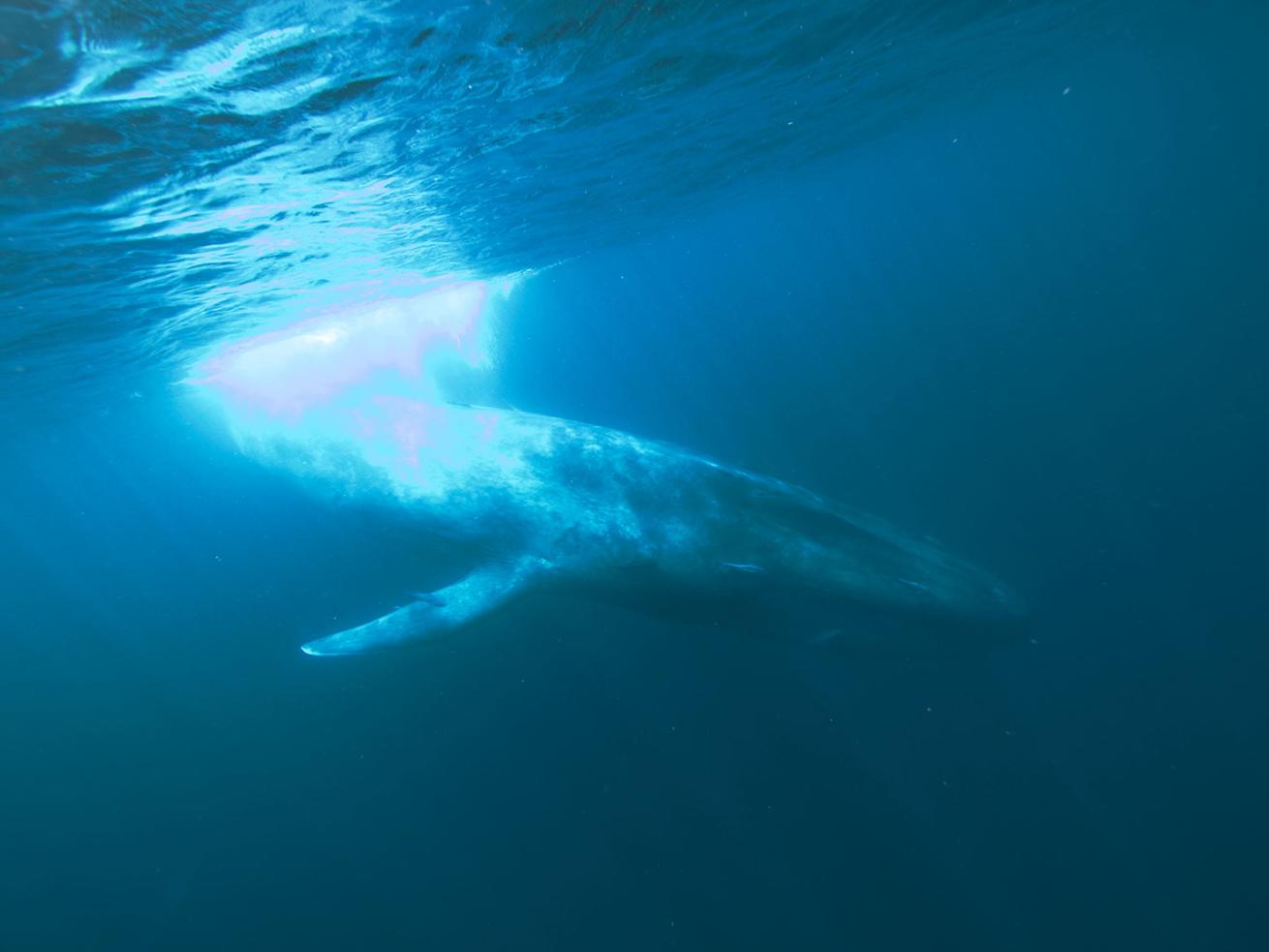
Courtesy Bruce LeibowitzWe also frequently encountered Bryde's whales.
After about four to seven blows, both Bryde's whales (pictured above) and blue whales will dive, usually from about five to 15 minutes. You have to be a strong swimmer to get into position to photograph a whale once it begins to dive.

Brandon ColeA blue whale begins its dive.
I honestly can say that my encounters with the blue whales (Balaenoptera musculus) in Sri Lanka compares with my experience with encountering whale sharks off Belize, which was also amazing. One word sums it up: epic. We were often surrounded by as many as a dozen whales, feeding on plankton, emitting vertical spouts about 30 feet high as they breathe, raising their flukes when diving as if in a goodbye wave to us. It seems as if they are moving at a leisurely pace until you try to keep up with them. When they feed, they move at about 3 miles per hour.
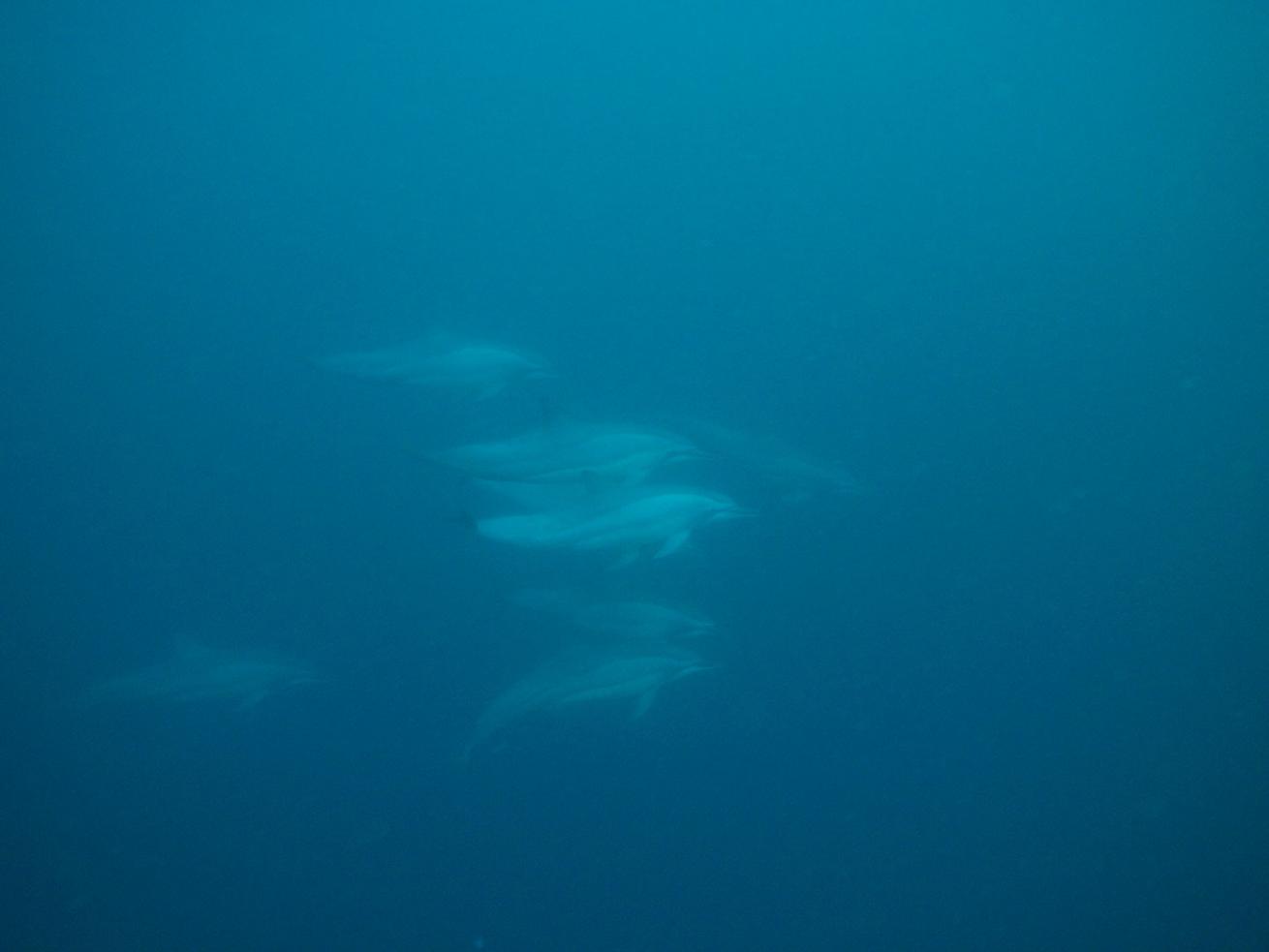
Courtesy Nicolas LecomteThis entertaining pod of spinner dolphins was probably 60 or 70 strong.
Moments after the pod of killer whales left, we encountered a large pod of spinner dolphins (Stenella longirostris). They were in a hurry to get somewhere (possibly to their resting place after spending the night hunting). Multiple groups of six to 12 spinners would zip past us, horizontally spiraling. They were all around our Zodiac, seemingly unperturbed by our presence.

Courtesy Howard MartenstynThis map shows the Sri Lanka's itinerary over a two-day period and details our sightings.
Our most prolific encounters were in the Little Basses Reef Lighthouse region. Little Basses Reef Lighthouse is located at the southeastern end of Sri Lanka and it is operated and maintained by the Sri Lanka Navy. “This was about the best time of the year to see whales in the Basses given the abundance of krill and calm seas,” says Howard Martenstyn, a Sri Lankan whale researcher and author of Out of the Blue. “The Little Basses is possibly one of the best locations in the world to see a large congregation of whales. It is especially ideal for researchers, scientists and whale watchers to study Sri Lanka's abundant marine life during the intermonsoonal seasons.”
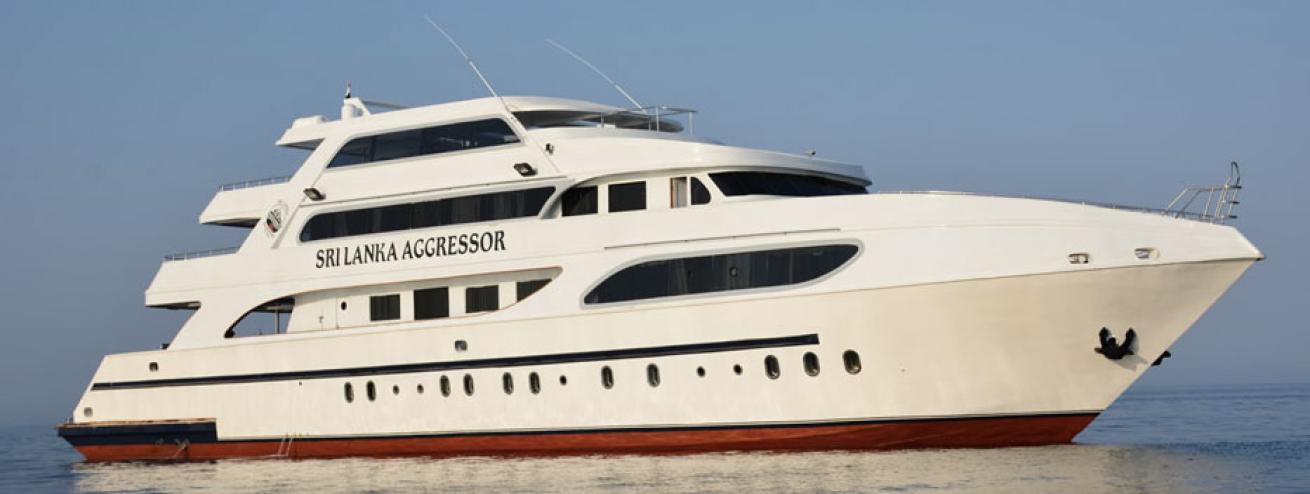
Courtesy Aggressor FleetThe Sri Lanka Aggressor is 145 feet long.
Visit the Aggressor Fleet's website to find out more about the Sri Lanka Aggressor. The next whale snorkeling trips are scheduled for February 2017.

